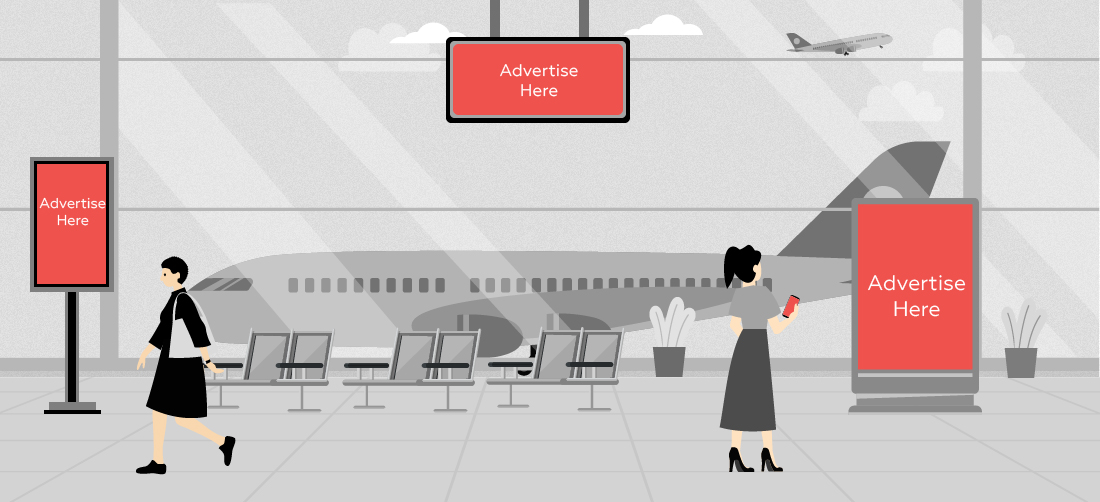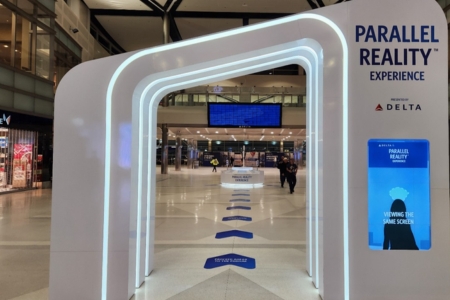
Digital transformation in airport advertising is changing industries everywhere. Digital technology is now revolutionizing how brands reach their audience. Airports, busy hubs with constant foot traffic, have fully embraced this change. Today, airport advertising is more engaging, interactive, and personalized than ever before. This blog explores how digital transformation in airport advertising is reshaping the industry and its benefits for brands.
The Rise of Digital Signage in Airports
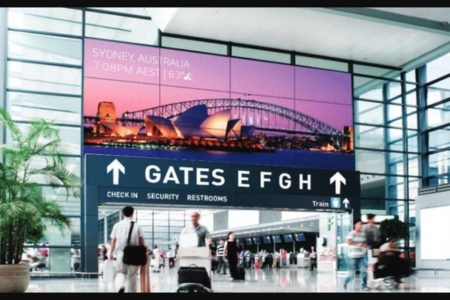
Replacing Traditional Billboards with Digital Displays
Static billboards are being replaced by digital displays in airports. This change brings many advantages. Digital displays are more engaging than traditional billboards. They can show dynamic content like videos and animations. This helps capture the attention of passengers who are constantly on the move.
Digital signage is also more cost-effective. Advertisers no longer need to print new ads for every campaign. Instead, they can update the content remotely. This flexibility allows for quick changes, keeping ads fresh and relevant.
Enhanced Targeting and Customization
One of the most powerful features of digital advertising in airports is targeting. Airports can tailor ads based on time of day, weather, and location. For instance, a winter clothing ad can appear when the weather is cold, while a sunscreen ad can be shown when it’s sunny.
Digital ads can also be personalized for different passenger groups. Business travelers might see ads for luxury products, while families could get promotions for travel gear. This level of customization makes ads more relevant to each viewer, improving engagement.
Interactive Advertising Experiences
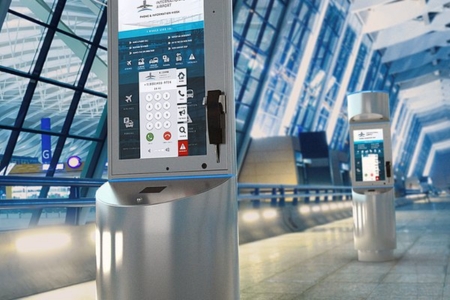
Touchscreen Kiosks and Interactive Displays
Touchscreen kiosks and interactive displays are popping up in airports. These systems offer passengers the chance to engage with the content. They can explore product demos, check flight information, or learn about local attractions.
For brands, this is a great opportunity. It allows them to create experiences that connect with passengers. The interaction makes the ads more memorable, improving engagement and brand recall.
Integration with Mobile Devices
Airports are also integrating advertising with mobile apps and Bluetooth technology. This creates even more personalized experiences. When passengers pass certain locations, their smartphones trigger specific ads.
For example, travelers near duty-free shops may receive discounts on products available in the store. This real-time targeting ensures that ads are timely and relevant. Mobile integration makes the experience seamless and interactive.
Real-Time Data and Analytics

Leveraging Big Data for Advertising Optimization
Digital advertising in airports benefits from big data. Airports collect a lot of information about passenger behavior—such as traffic patterns, shopping habits, and dwell times. This data helps advertisers optimize their campaigns.
Real-time data allows advertisers to adjust their ads instantly based on audience behavior. If an ad isn’t performing well, changes can be made quickly. This flexibility helps maximize the effectiveness of each campaign.
Measuring Engagement and ROI
A major advantage of digital advertising is the ability to measure results. Traditional ads, like print billboards, are harder to track. Digital ads, however, can be measured using metrics like engagement rates and click-through rates.
These metrics help advertisers see how well their campaigns are performing. This allows them to tweak ads or strategies for better results. Airports and brands can also track the return on investment (ROI) from their ad campaigns.
Future Trends in Airport Advertising
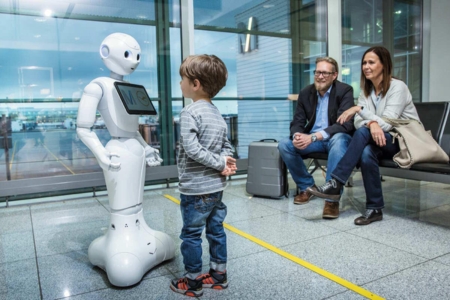
Artificial Intelligence and Machine Learning
In the future, artificial intelligence (AI) and machine learning will play a big role in airport advertising. These technologies can predict which ads will perform best. They can also adjust the content based on data from passengers.
AI can help automate content creation, making it faster and more efficient. Over time, AI will improve the personalization of ads, ensuring they’re even more relevant to each traveler.
Augmented Reality (AR) and Virtual Reality (VR)
Augmented Reality (AR) and Virtual Reality (VR) are new technologies that could transform airport advertising. AR allows digital content to be overlaid onto the real world. Passengers could use their phones to interact with 3D ads or product demos as they walk through the airport.
VR offers even more immersive experiences. Passengers could step into a virtual world to explore products or destinations. Although these technologies are still developing, AR and VR have the potential to revolutionize how passengers experience airport ads.
The Benefits of Digital Transformation for Airport Advertising
Increased Revenue Generation
Digital advertising in airports drives more revenue for airports. The flexibility and dynamic nature of digital ads make them more appealing to advertisers. This results in higher demand, allowing airports to charge premium rates for ad space.
Successful campaigns can also generate significant returns. This helps airports and brands alike by offering more opportunities to connect with passengers while driving revenue. Airport advertising rates can fluctuate based on the placement and customization of ads, allowing advertisers to select the best options for their campaign goals.
Enhancing Passenger Experience
Digital transformation in airport advertising enhances the passenger experience. Modern ads are less intrusive than traditional billboards. Instead of being passive, digital displays are interactive and engaging.
Interactive kiosks and touchscreens provide useful information about flights, services, or local attractions. These technologies improve the overall experience for travelers, making the airport environment feel more modern and welcoming.
Excellent Publicity is the ideal partner for brands of all sizes looking to succeed in airport advertising. Our expertise and strategic planning ensure campaigns are impactful, memorable, and tailored to your goals. Whether you’re a growing business or an established name, Excellent Publicity helps your brand stand out and makes airport advertising work for you.
FAQs
Digital ads are dynamic and can be updated in real time. They are more engaging, offering videos, animations, and interactive content. Traditional billboards, on the other hand, are static and can’t be changed as quickly or personalized.
Airports collect data from mobile apps, sensors, and tracking systems. This data is used to personalize ads based on passengers’ behavior, location, and preferences. It helps create a more relevant advertising experience.
Challenges include the cost of infrastructure, technology adoption, and privacy concerns. Airports must invest in the right systems while complying with data protection laws. Getting all stakeholders to adopt new technology can also be a challenge.
The future will feature more AI-driven ads, interactive AR/VR experiences, and even more personalized campaigns. Digital advertising will become smarter and more effective, providing greater value to both brands and passengers.
Small brands can target specific passenger groups with digital ads. They can use location-based targeting or take advantage of cost-effective digital platforms to reach their audience. Airport advertising offers many opportunities for smaller businesses to build visibility in a high-traffic environment.


